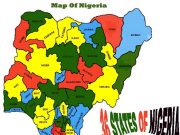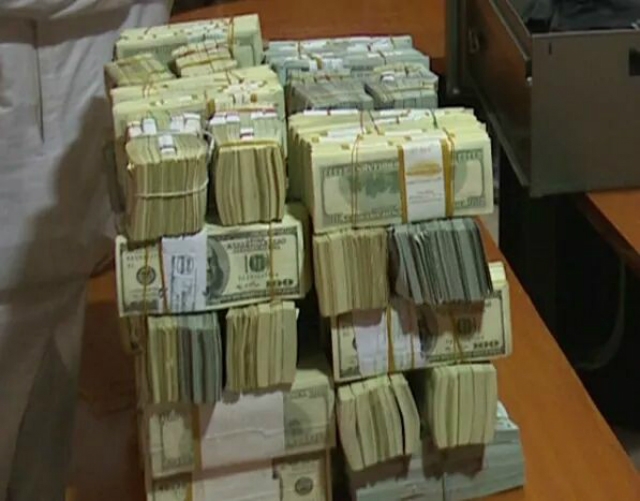When it comes to currencies, the terms “price” and “value” have distinct meanings. The price of a currency is the rate at which it can be exchanged for another currency. On the other hand, the value of a currency refers to its purchasing power, that is, the amount of goods or services that can be bought with a unit of the respective currency.
The price of a currency, better known as its foreign exchange (FX) rate, does not always reflect its value or worth (purchasing power). For example, a country may have a high exchange rate due to high demand for its currency in the FX market, but if prices are high in that country (i.e., it has low purchasing power), then the value of the currency may be lower than what the FX rate suggests.
With the US dollar, which is the world’s reserve currency, it is interesting to note the other currencies that are priced higher than the US Dollar.
Types of Exchange Rates
An exchange rate is the rate at which one currency can be exchanged for another.
There are two (2) basic types of exchange rates: a fixed exchange rate and a floating exchange rate. A fixed exchange rate is a rate set and maintained by a country’s government or central bank. The rate is pegged to some value, such as gold or another currency like the US Dollar. This system aims to keep the value of a country’s currency stable.
The other type of exchange rate is the floating exchange rate. This is a rate that is determined by the foreign exchange market through supply and demand. Under a floating rate exchange system, a currency’s exchange rate can fluctuate from moment to moment.
Calculation of an Exchange Rate
An exchange rate is the value of one country’s currency or another currency.
For example, if the USDCHF exchange rate is 1.15, it means that 1 Swiss Franc is worth 1.15 US Dollars.
Exchange rates fluctuate based on economic factors such as inflation, interest rates, and geopolitical events. These factors will increase or decrease the supply and demand for a particular country’s currency and thus influence the exchange rate.
Factors that Affect Currencies
The value of a currency in the FX market can be influenced by various factors, leading to its increase or decrease in value. Some key factors include:
Interest Rates: If a country’s central bank raises interest rates, that country’s currency becomes more attractive because investors can earn more on their investments within that country. As demand for the currency increases, so does its value.
Inflation Rates: A country with lower inflation rates compared to others will see its currency appreciate. A lower inflation rate implies an increase in the purchasing power of the currency, which investors would find attractive.
Economic Performance: If a country’s economy is doing well, with strong growth and high productivity, its currency is likely to appreciate. On the contrary, if the economy is in a recession, the currency is likely to depreciate.
Political Stability and Performance: Stable Countries, that have transparent legal systems, and are secure and politically peaceful are considered safer investments, leading to currency appreciation.
Balance of Trade: This refers to the difference between a country’s exports and imports. If a country exports more than its imports (trade surplus), its currency is expected to appreciate due to a higher demand from foreign entities purchasing its goods and services.
Public Debt: Countries with high levels of public debt appear to be less attractive to foreign investors due to the high risk of default as well as the possibility of inflation. This can cause the currency to depreciate.
Speculation: If traders believe a currency will move in a certain direction, they will trade accordingly and may cause the currency to go up or down.
Intervention by Central Banks: Central banks can intervene in the foreign exchange market to try to stabilize or devalue their currency. They can do this by buying or selling their currency or foreign currencies.
It should be noted that currencies are traded in pairs, and their values are relative. So, a currency goes up or down when compared to another currency. For instance, if the US Dollar depreciates against the Swiss Franc, it means that one US Dollar can buy fewer Swiss Francs than before.
Table of Currencies Worth More than the US Dollar
Seven Currencies Worth More than the US Dollar
The table below lists seven (7) currencies that are valued higher than the US Dollar, according to Investopedia report.
Swiss Franc: 1 CHF = 1.15 USD
The Swiss Franc (CHF) to US Dollar (USD) fluctuated between 0.9862 and 1.13 from June 2022 to June 2023. The lowest exchange rate was observed on November 3rd, 2022 when 1 CHF was equivalent to $0.9862. The highest exchange rate over the period occurred on May 4th, 2023, when 1 CHF was equivalent to $1.13. The average exchange rate over this period was $1.06.
From June 2022 to June 2023, Switzerland’s economy experienced a slowdown, with GDP growth decreasing from 2.1% in 2022 to an expected 1% in 2023, amidst high global economic uncertainty. Inflation, which peaked at 3.5% in August 2022, was reduced to 2.6% by April 2023 due to decreases in energy and food product prices and was projected to further decrease to 2% by year-end.
The Swiss National Bank, the central bank of Switzerland, responded to these inflationary pressures by tightening monetary policy, with policy rate hikes expected to further reduce inflation to 1.9% in 2024. Despite these economic challenges, Switzerland maintained political stability, continuing its dialogue with the EU regarding single market accession.
These factors (economic performance, inflation, monetary policy, and political stability) likely influenced the Swiss Franc’s movements during this period, with the economic slowdown and inflation potentially exerting downward pressure, and the central bank’s policy rate hikes and political stability providing support.12
Caymanian Dollar: 1 KYD = 1.21 USD
The Caymanian Dollar (KYD) to the USD exchange rate remained stable at 1.20 from June 2022 to June 2023. There was no volatility during this period, indicating a stable economic environment in the Cayman Islands. This stability could be attributed to the Cayman Islands’ fixed exchange rate policy, where the value of the Caymanian Dollar is pegged to the US Dollar at a fixed rate.
From June 2022 to June 2023, the Cayman Islands demonstrated strong economic performance, with a real GDP growth of 3.7% in 2022, aided by a rebound in tourism. It is expected that this growth will continue, with an average growth of 2% projected for 2023 to 2025.
The Cayman Islands’ debt to GDP ratio was a low 8.9% at the end of 2022, significantly lower than the 43% median for similarly rated countries. Also, the country maintained a stable political environment, with the country’s institutions exhibiting effective policymaking.
These factors, along with the country’s resilience to global efforts against tax evasion, likely contributed to the stability of the Caymanian Dollar during the abovementioned period.
British Pound: 1 GBP = 1.28 USD
The British Pound (GBP) to USD exchange rate fluctuated between $1.06 and $1.28 from June 2022 to June 2023. The lowest exchange rate was observed on September 28th, 2022, when 1 GBP was equivalent to $1.06. The highest exchange rate occurred on June 16th, 2023, when 1 GBP was equivalent to $1.28.
From June 2022 to June 2023, the United Kingdom’s (UK) economic performance was characterized by a broadly flat GDP in the first half of 2023, with underlying growth expected to be higher than headline GDP growth due to temporary factors such as strikes and an additional bank holiday. This underlying growth was projected to be roughly 0.2% per quarter in the first and second quarters of 2023, which is low when compared to historical average growth rates, in the second quarter of 2023 it was around half a per cent stronger than projected in February 2023.
Interest rate movements during the period saw the Bank of England, the central bank of the UK, increase its Bank Rate by 0.25% to 4.5% in May 2023. The market-implied path for the Bank Rate peaked at around 4.75% in the fourth quarter of 2023 before ending the forecast period at just over 3.5%.14
These factors contributed to the movements of the British Pound during the period. The recent appreciation of GBP put some downward pressure on UK import price inflation, and over time on CPI inflation.
Jordanian Dinar: 1 JOD = 1.41 USD
The Jordanian Dinar (JOD) to the USD exchange rate remained stable at $1.41 from June 2022 to June 2023. There was no volatility during this period because, like the Caymanian Dollar, the Jordanian Dollar has been pegged to the U.S. dollar.
From June 2022 to June 2023, Jordan’s economic performance was characterized by a GDP growth of 2.5% driven by robust private spending despite higher interest rates. The unemployment rate eased to 21.9% in the first quarter of 2023, and inflation receded to a 15-month low of 2% in May 2023. The Central Bank of Jordan maintained its re-discount interest rate at 8.25% in June 2023.
When it comes to political stability, Jordan continued to promote economic inclusion, develop sustainable municipal infrastructure, and green energy, and strengthen competitiveness and resilience. The country also focused on diversifying access to finance and fostering innovation, strengthening the capacity of corporations and other business enterprises, and improving the overall business environment.
Omani Rial: 1 OMR = 2.60 USD
Oman is yet another country that pegged its currency to the U.S. dollar at a fixed exchange rate (1 OMR to 2.60 USD). The Omani rial (OMR) has maintained its value against the dollar due to Oman’s oil production and its historically tight monetary policy and financial restrictions.
Over the period June 2022 to June 2023, the OMR experienced little issue with its pegged currency. This can be a result of the country’s economic performance, interest rate movements, and political stability. The economic performance of Oman during the abovementioned period was marked by a steady growth rate coupled with the government’s efforts to diversify the economy and implement fiscal consolidation measures.
Politically, Oman remained stable throughout the period, with no major incidents reported that could have affected the value of the Rial.
This political stability, coupled with steady economic performance and stable interest rates, likely contributed to the stability of the Omani Rial’s peg.
Bahraini Dinar: 1 BHD = 2.65 USD
The Bahraini dinar (BHD) was pegged to the U.S. dollar at a slightly higher value than the Omani Rial.
From June 2022 to June 2023 Bahrain experienced strong growth, in line with other Gulf Cooperation Council countries. Continued fiscal reform momentum and high oil prices improved fiscal and external balances. The economy grew by 4.9% in 2022, driven by a 6.2% growth in non-hydrocarbon GDP while hydrocarbon GDP contracted by 1.4%. Non-hydrocarbon growth was driven by public, financial, and hospitality services and manufacturing.
GDP growth is projected to moderate to 2.7% in 2023, with non-oil GDP growing by 3.3%, reflecting fiscal consolidation, higher interest rates, and a base effect from 2022 strong growth.
CPI inflation accelerated from -0.6%, on average, in 2021 to 3.6% in 2022. With economic recovery well underway, ongoing fiscal reforms, and higher oil prices, the state budget deficit declined significantly, narrowing to 1.2% of GDP in 2022, from 6.4% in 2021, while the overall fiscal deficit declined from 11% to 6.1% of GDP.
Government debt declined to 117.6% of GDP in 2022 from 127.1% of GDP in 2021. Bahrain’s current account improved markedly and posted its largest surplus in decades, estimated at 15.4% of GDP in 2022, up from 6.6% of GDP surplus in 2021.
Given the strong economic performance and fiscal stability, it is likely that Bahrain’s peg will remain for the foreseeable future.
Kuwaiti Dinar: 1 KWD = 3.25 USD
Kuwaiti Dinar
The Kuwaiti Dinar (KWD) to USD exchange rate fluctuated between $3.22 to $3.30 from June 2022 to June 2023. The minimum exchange rate was recorded on October 20th, 2022, at $3.22, while the maximum exchange rate was seen on March 18th, 2023, at $3.30. The average exchange rate during the period was $3.26.
During the abovementioned period, the Kuwaiti Dinar fluctuation could be a result of various economic and political factors. Kuwait’s economy largely recovered from the pandemic, with growth surging to 8.2% in 2022, primarily driven by high oil production and prices. Non-oil growth also rose to 4.0% in 2022, reflecting strong domestic demand. However, real GDP growth was projected to fall to 0.1% in 2023 due to agreed OPEC+ oil production cuts and slower external demand growth.
The fiscal and external balances strengthened due to higher oil revenues, but the overall fiscal surplus was projected to drop to 6.9% of GDP in 2023 and fall steadily thereafter into deficit over the medium term.
The Central Bank of Kuwait also implemented policy rate hikes to contain inflation and maintain financial stability, which could have influenced the Dinar’s value.19
The country’s approach to fiscal policy, monetary policy, and structural reforms, as well as its response to global decarbonization trends, could have played a role in the movements of the Kuwaiti Dinar over the period.
Credit: reportersatlarge.com





































































